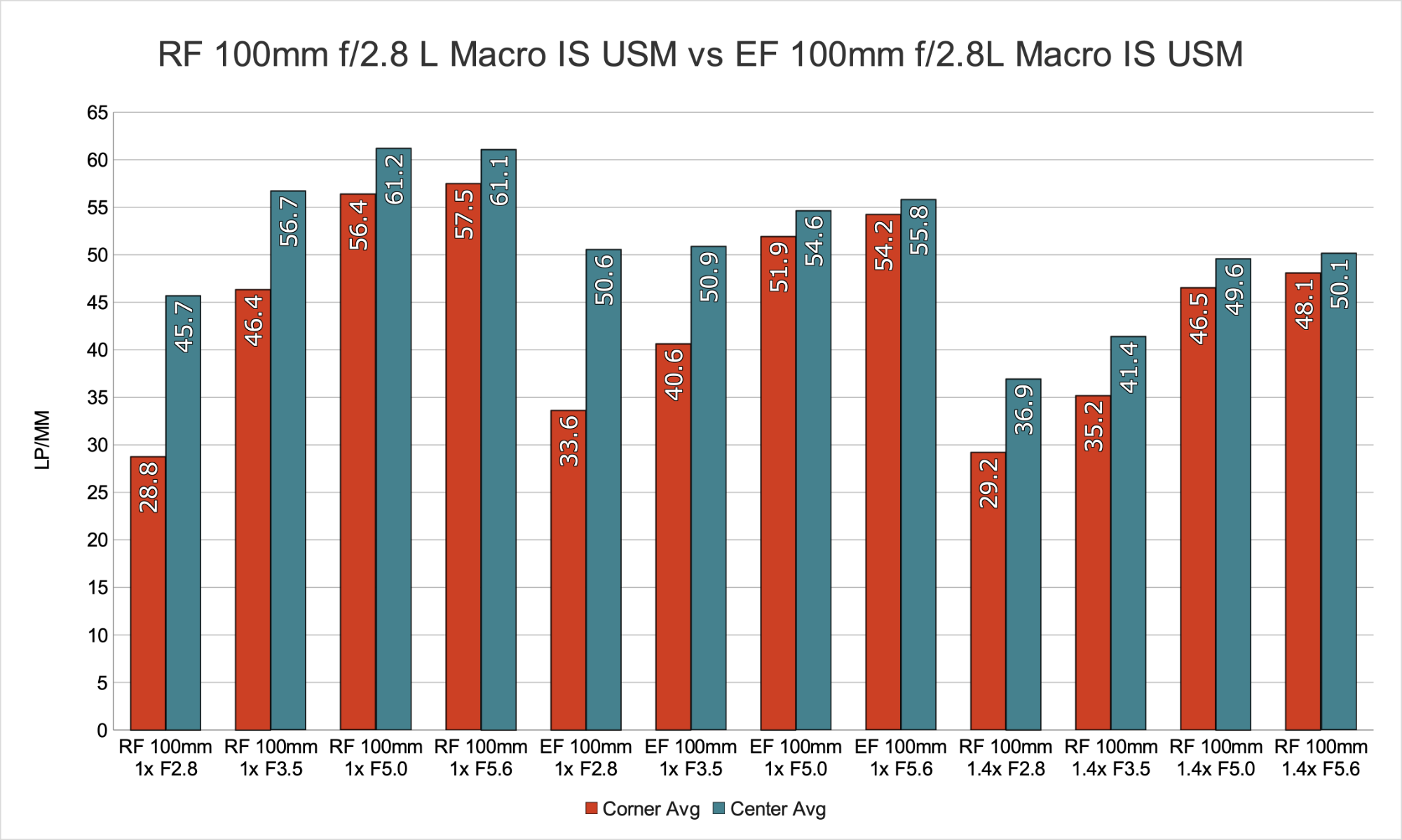RF 100mm 2.8 L Macro vs EF 100mm 2.8 L Macro
13 May 2022
In this post, I am comparing the Canon RF100mm F2.8 L MACRO IS USM and the Canon 100mm f/2.8L Macro IS USM. I will be evaluating the lens sharpness at macro magifactions for 1:1 for both the RF and EF lens, and 1.4:1 for the RF version. Chromatic aberration, vingetting, and field curvature were not evaluated.
Test setup
Lenses were tested using slanted edge MTF. A sharpened and flame blackened razor blade was imaged using a Canon R5. For the RF 100mm, the SA control was locked to the zero position. Focus stacking was employed to eliminate any potential field curvature or misalignment. Although both of these lenses can be focus bracket using internal focusing, and external rail was used for for obtaining the focus stacks to avoid shifts in magnification. Finally, all completed focus stacks were evaluated using MTF Mapper. Three samples were taken and averaged for the center and upper left corner of each image. Results represent the MTF50 of the lens in line pairs per millimeter.
I would however, not consider this an absolute figure since the camera used, image processing, test target, and evaluation model all contribute to this final value. Values therefore should only be used for relative comparison inside of this test.
Results

Some interesting results to note. First at 1:1 magnification, the EF100mm is a little bit sharper in the center, and much sharper in the corners at f2.8. That changes right away when stopping down to F3.5, with the RF100mm becoming much sharper in both the center and corners. At 1:1 magnification, the RF100mm appears to be sharper than the EF100mm at all tested apertures except F2.8.
Looking at the RF100mm at 1.4:1 magnification, the resolution drops slightly as I would have expected. However relative to the EF100mm at 1:1, its resolution is very close to matching it when stopped down, for the advantage of 40% more magnification.
Additional lens data
My conclusion is, the RF100mm appears to exceed the EF100mm in sharpness, magnification, and gimmickyness(spherical aberration control). The Working distance is slightly lower, but I have not noticed the difference is actual usage.
Addendum: all though I did not take the time to quantify chromatic aberrations of each lens, the axial CA in the test images to be noticeably lower in the RF100mm, at least to my inbuilt bio-cameras. I may at a later date test the CA of each lens if it is important to anyone.